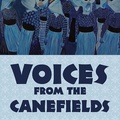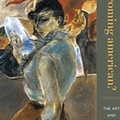Hinamatsuri literally translates as Doll Festival, but is often referred to as Girl’s Day. Celebrated annually on March 3, families pray for the happiness and prosperity of their girls, helping to ensure they grow up healthy and beautiful. On this day, families with young daughters celebrate this event by displaying hina-ningyo, special dolls for the occasion.
The presentation of the dolls can be traced back to the Edo Era (1603-1876) when it was used as a way to ward off evil spirits. In modern times, they are displayed more out of tradition than for use as lucky charms. The ceremonial dolls are often handed down from generation to generation. They are brought out for a few days in the best room of the house at festival time, after which they are carefully stored away until the following year.
A set of Hina dolls commonly consists of 15 dolls typically wearing the costumes of a Heian Period Imperial Court. They are arranged hierarchically on a five or seven tier stand covered with red cloth. The Emperor and Empress dolls sit on the top tier. Below them sit two ministers, three ladies in waiting, and five court musicians. The display also includes miniature household articles that which are often exquisite artistic productions. More modest displays may only feature the Imperial couple.
In addition to displaying hina dolls, special foods are included in the celebration. Hina arare (pastel-colored light rice crackers) and hishimochi (diamond shaped rice cakes with pink, green, and white layers) are placed in front of the Hina dolls as an offering. Other Shirozake, a sweet drink made from fermented rice, is also served. Similar to sake, but without alcohol, it is safe for children to enjoy as well.
The celebration of Hinamatsuri was brought to the United States by early Issei immigrant families. In addition to its role in celebrating traditional customs in Japanese American households and communities, special dolls played a role in U.S.–Japan relations when in 1927, Dr. Sidney Gulick established the Committee on World Friendship Among Children, and began a mission of friendship which involved sending dolls from America to Japan. In total, 12,739 Friendship Dolls were made and sent to Japan, each with its own passport, train and boat tickets, and handwritten letters from American children. The American dolls arrived in Japan in time for Hinamatsuri, where the dolls were distributed to schools throughout Japan, with elaborate ceremonies to greet and welcome the dolls into their new homes. Japanese children reciprocated by sending beautiful Japanese dolls to the United States in time for Christmas celebrations.
Today, although not as commonly observed as Kodomo no Hi, Hinamatsuri is still celebrated by Japanese Americans. Many communities across the United States display dolls or have special programs. Japanese department stores in America sell the special dolls imported from Japan. Towards the end of February, Hishimochi are made and sold by local manju shops like Mikawaya and Fugetsu-do, two of Los Angeles’ oldest confectioners. Local Japanese markets offer the other special foods.
Although not a national holiday, the meaning of Hinamatsuri is to celebrate girls’ happiness, in Japan and the United States. Grandmother to mother, mother to daughter, the wish for a daughter’s happiness is both valued and treasured, and still celebrated in this spirit.
* This article was originally published on the Japanese American National Museum Store Online.
© 2007 Japanese American National Museum







